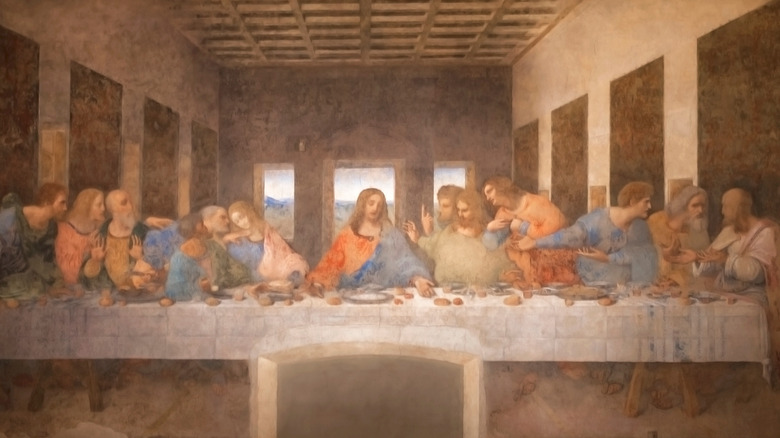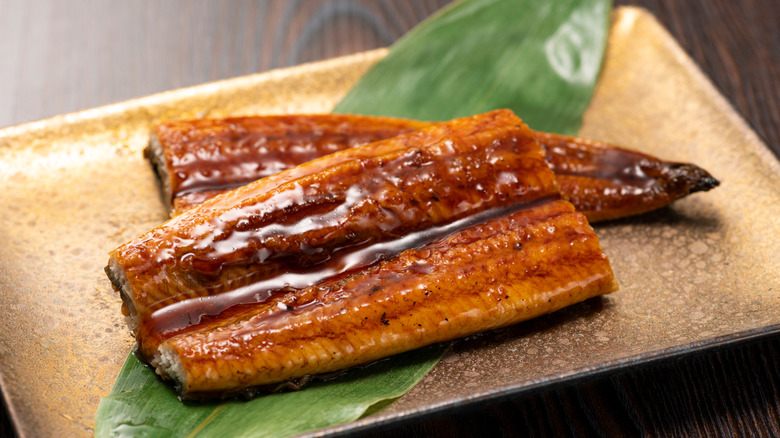The Strange Dish Depicted In Leonardo Da Vinci's The Last Supper
When Leonardo Da Vinci finished painting "The Last Supper" in 1498, it wasn't long before it began to deteriorate, Gastronomica reports. By 1517, viewers were already complaining that much of the paint had already chipped away, making it hard to make out many of the details. When restoration occurred in 1997, people finally got to see what was actually on the table, and it turned out to be a lot different from the biblical account of Jesus' last meal with his disciples, per Bible Gateway.
According to the Gospel of Matthew, The Last Supper was a Passover meal that consisted of unleavened bread and wine. History backs this up, Italian archaeologist Generoso Urciuoli confirmed (via Live Science), adding that bean stew, lamb, olives, bitter herbs, fish sauce, and dates were likely served alongside the unleavened bread and wine. Da Vinci's depiction of The Last Supper, however, shows something else. It isn't a historically accurate Passover spread, and it includes a seafood dish that gives more insight into Da Vinci's own eating habits, rather than those of Jesus and his disciples.
Leonardo Da Vinci's depiction of The Last Supper includes eel
When the 20-year restoration of the painting was complete, experts concluded that the food on the table had to be fish. As Huff Post explains, fish was a commonly used symbol in early Christian art, and it was only logical that The Last Supper would follow suit. But upon careful examination, the late John Varriano, professor of art at Mount Holyoke College discovered in 2008 that it was eel that Da Vinci painted, not fish.
"Not only is it a chunk of eel, but it's also garnished with a slice or half a slice of citrus fruit, probably a lemon or an orange," Professor Varriano shared during a BBC Radio broadcast in 2016. A recipe found in a renaissance cookbook Da Vinci had in his library further supported Varriano's findings. The cookbook explains two different ways of preparing eel, by either spit roasting it with bay leaves, sage, breadcrumbs, cinnamon, and salt, or by boiling it with parsley, sage, bay leaves, verjuice, and pepper (via Gastronomica). The resulting eel dish reassembles almost exactly what Da Vinci depicted in his painting of The Last Supper.

